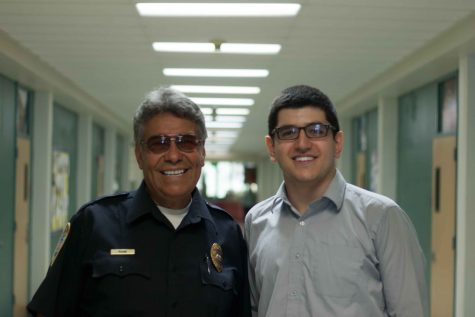Students enlighten a path to reusable energy
A Crescenta Valley student displays her Solar Art. The students used sun rays to burn etchings on the wood that the students sketched prior to the scorching. This was meant to advocate the use of the sun in arts and crafts.
On March 23, Rosemont Middle School hosted a very unique event, the Solar Discovery Faire. For the fifth consecutive year, this event promoted use of safe, solar energy. According to Tor Allen, the Executive Director of the Rahus Institute and the organizer of the event, “The fair is a place to explore renewable energy and aid damaged ecosystems.” This was done through a series of booths, each of which had an advocate of various uses of solar energy.
Booths, referred to as Solar Vendors, offered demonstrations of use of solar power. These included solar cooking, which demonstrated Horace de Saussure’s Solar Ovens, that used reflective panels to concentrate sun’s rays while having a transparent cover on the top to act as an insulation. Other displays included Solar Etching, which revolved around burning shapes into wood using a magnifying glass. Solar Whirligigs were about making a kinetic toy which had its battery connected to small solar panels. Solar Chargers were a series of solar panels connected to a portable charger, all mounted inside a small binder, called the Solar Notebook.
“As long as you have the binder and the rechargeable battery,” said Clark Magnet student and fair volunteer Samuel Thompson, “you can charge your phone anywhere that has the sun.” These were only a few of all the possible wonders of solar energy displayed at the fair.
Along with the students, the fair was visited by the Glendale Water Power (GWP) and solar-panel company Solar Optimum representatives. Both groups advocated uses of the sun and offered merchandise that made use of the reusable energy.
Volunteer students advertised ways to use the sun in daily life. Upon entrance, visitors were provided with a booklet, titled “Your Solar Home: Guidebook,” which summed up different uses of the sun in daily life. In spirit of this booklet, each vendor advertised how to use the sun to create arts and crafts, power phone chargers and even water plants.

INTERESTS/HOBBIES: Gaming, Reading, movies.
EXTRACURRICULAR ACTIVITIES: KATS, Mock Trial.
THREE WORDS TO DESCRIBE ME ARE: I killed someone.
IN...










